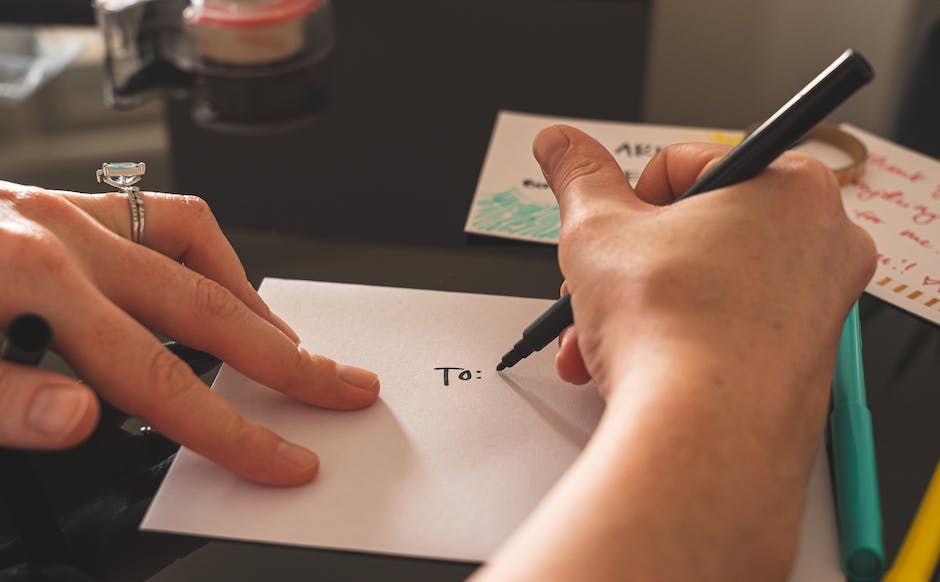Letter of Introduction Sample

Are you a freelancer looking to make a lasting impression on potential clients? The key could be as simple as a well-crafted letter of introduction. This invaluable tool can help you establish meaningful connections in your field while setting you apart from the competition. Let’s dive into the world of introduction letters and explore their purpose, their components, and how they can be tailored to suit different contexts.
Before we get started, take a moment to visualize a letter of introduction.  This image captures the essence of what an introduction letter is all about – making connections, showcasing your skills, and opening doors to new opportunities.
This image captures the essence of what an introduction letter is all about – making connections, showcasing your skills, and opening doors to new opportunities.
Understanding the Importance of a Letter of Introduction
Now, you might be wondering, why is a letter of introduction so important? The answer lies in the power of first impressions. A letter of introduction is your initial contact with a potential client. It’s your chance to showcase your skills, your passion, and your unique offerings. It’s an opportunity to make your mark and show that you’re not just another face in the crowd. When written effectively, a letter of introduction can open doors and pave the way for fruitful professional relationships.
Differentiating Between a Cover Letter and a Letter of Introduction
Often, people confuse a letter of introduction with a cover letter. While they may seem similar on the surface, they serve different purposes. A cover letter is typically attached to a job application, explaining the candidate’s suitability for the role. On the other hand, a letter of introduction is a proactive approach by a freelancer or a business to establish a connection with potential clients or collaborators. It is not tied to a specific job application, but rather serves as a general presentation of one’s skills and services. Understanding this distinction is crucial in knowing when and how to use each letter effectively.
Components of an Effective Letter of Introduction
Are you wondering what makes a good letter of introduction? Or perhaps, you’re asking yourself: “What should I include in my letter?” These are common questions, and we’ve got the answers! The effectiveness of your introduction letter lies in its components. Each part of the letter plays a crucial role in conveying your message and making a strong impression. Let’s break them down.
The Greeting
First impressions count, and the same goes for your letter of introduction. The greeting sets the tone for the rest of the letter. It’s your first chance to establish a connection with the reader. How you choose to begin your letter can depend on how much you know about the person you’re writing to. For instance, if you know the name of the person, a simple “Dear [First Name],” could suffice. If you have a more formal relationship with the person or if you don’t know their name, you might opt for a more formal greeting, such as “Dear Sir/Madam,” or “To whom it may concern,”. Remember, the key is to keep it professional and respectful.
The Body
Now that you’ve set the stage with your greeting, it’s time to dive into the meat of your letter – the body. This is where you introduce yourself, highlight your skills, experience, and the services you provide. Be concise, yet detailed. The body of your letter should provide enough information to help the reader understand who you are and what you can offer. However, be careful not to overwhelm them with too much information. The goal is to pique their interest and make them want to learn more about you.
The Closing
Just as the greeting is crucial for making a good first impression, the closing of your letter is essential for leaving a lasting one. It’s your last chance to express your interest and eagerness for a response. Closing your letter with a strong call to action can encourage the reader to reply or take the next step. Consider using phrases like “I look forward to hearing from you,” or “Please feel free to contact me at your earliest convenience.” Remember to thank the reader for their time, and sign off professionally.
Crafting Your Unique Value Proposition
What sets you apart from other freelancers in your field? What unique value can you bring to potential clients? These are the questions your unique value proposition (UVP) should answer. Your UVP is a clear statement that describes the benefit of your offer, how you solve your customer’s needs, and what distinguishes you from the competition. Crafting a compelling UVP can be challenging, but it’s well worth the effort. It makes you stand out, can attract the right clients, and helps you position yourself as an expert in your field.
Letter of Introduction Dos and Don’ts
As you embark on crafting your letter of introduction, it is crucial to be aware of the typical do’s and don’ts. These are guidelines that can help you avoid common pitfalls and enhance the effectiveness of your letter. Some of these tips are straightforward, while others might need some careful consideration. But remember, the aim is to create a letter that not only introduces you but also leaves a positive and lasting impression on the reader.
Let’s take a look at some of these guidelines:
| Do’s | Don’ts |
|---|---|
| Personalize your greeting | Don’t use generic greetings |
| Highlight your unique skills and experiences | Don’t just list your skills |
| Be concise and clear | Don’t be overly verbose |
| Express your interest and enthusiasm | Don’t sound desperate |
| Proofread your letter | Don’t send without checking for errors |
These guidelines are not set in stone, but they provide a good starting point to ensure that your letter is professional, engaging, and effective.
Tailoring Your Letter of Introduction as per the Context
Another important aspect to consider when writing your letter of introduction is the context. What works for one industry or potential client may not work for another. Hence, it’s essential to customize your letter based on the recipient. This shows that you’ve done your research and understand the recipient’s needs and expectations.
For example, if you’re reaching out to a tech startup, you might want to highlight your experience in the tech industry, your understanding of the startup culture, and your ability to work in fast-paced environments. On the other hand, if you’re introducing yourself to a traditional corporate company, you might want to emphasize your professional qualifications, your experience in a similar corporate environment, and your ability to adhere to established protocols and procedures.
So, how different should each letter be? And how can you ensure that your letter is relevant to the recipient? The key is to keep the core structure of your letter the same, i.e., the greeting, body, and closing, but tweak the content to suit the specific recipient.
Remember, a well-tailored letter of introduction not only demonstrates your professionalism but also shows that you’re genuinely interested in working with the recipient. So, invest the time and effort to customize your letter, and it could open doors to opportunities you never imagined.

Case Scenarios and Sample Letters
Writing a letter of introduction may seem challenging, but it becomes much easier when you have a clear context or scenario in mind. Let’s consider some scenarios where a letter of introduction can prove beneficial and examine sample letters for each.
- Scenario 1: A freelance graphic designer introducing their services to a new startup.
Sample Letter:Dear [Recipient’s Name],
I am a freelance graphic designer with over five years of experience in creating engaging visuals for brands. I specialize in designing logos, brochures, and social media graphics. I am reaching out to offer my services and help enhance your startup’s visual identity. I look forward to the opportunity to discuss how my skills can benefit your brand.
Best Regards, [Your Name]
- Scenario 2: A freelance content writer reaching out to a digital marketing agency.
Sample Letter:Dear [Recipient’s Name],
I am a freelance content writer with a passion for crafting compelling blog posts and articles. My writing style is adaptable and I am proficient in various topics, including digital marketing, SEO, and social media strategies. I am reaching out to offer my services and contribute to your agency’s content creation efforts. I look forward to discussing potential collaborations with you.
Sincerely, [Your Name]
Final Thoughts on Mastering the Letter of Introduction
Mastering the art of writing a compelling letter of introduction is an invaluable skill for freelancers. It can open doors to new opportunities and help establish meaningful connections with potential clients. Remember, the key is to keep your letter succinct, relevant, and personalized.
- Practice makes perfect: The more you write, the better you will get at crafting letters of introduction.
- Highlight your unique value proposition: Make sure to emphasize what sets you apart from the competition.
- Personalize your letters: Tailor your letter to the recipient to show that you understand their needs and can offer a solution.
- Keep it professional: Maintain a professional tone throughout the letter, but don’t shy away from showing your personality.
Get Organized & Win More Clients
Kosmo has everything you need to run your freelancing business.